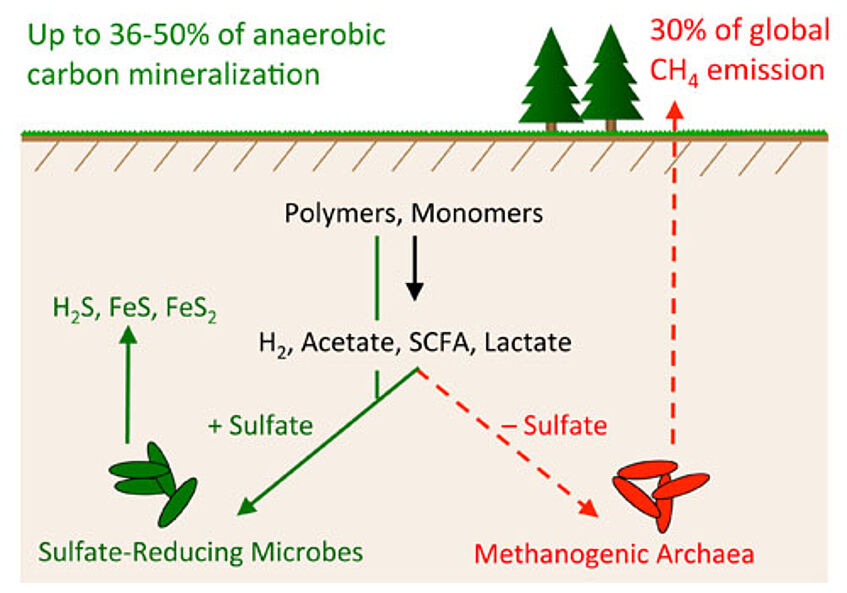Sulfate-reducing microorganisms mitigate methane emissions from wetlands

Wetlands are important carbon sinks but at the same time major global sources of the greenhouse gas methane. A hidden sulfur cycle in wetlands allows sulfite/sulfate-reducing microorganism to successfully compete with methanogenic archaea and thereby to reduce methane emissions (Pester et al. 2012. Front Microbiol). While novel, uncultivated lineages dominate dsrAB diversity in wetlands (Steger et al. 2011. Appl Environ Microbiol), we identified rare microbiota members (including Desulfosporosinus) as important sulfate reducers in an acidic peatland by comparative 16S rRNA gene- and dsrAB-stable isotope probing (Pester et al. 2010. ISME J). To further our understanding of sulfate reducer ecophysiology and genomics in peatlands, we are investigating the species interactions (Hausmann et al. 2016. ISME J) and metatranscriptome dynamics in microcosms under in situ-like conditions (Hausmann et al. 2018. ISME J, Hausmann et al. 2019. mBio).
Selected publications on this theme:
- Hausmann B, Pelikan C, Herbold CW, Köstlbacher S, Albertsen M, Eichorst SA, Glavina del Rio T, Huemer M, Nielsen PH, Rattei T, Stingl U, Tringe SG, Trojan D, Wentrup C, Woebken D, Pester M, and Loy A [2018] Peatland Acidobacteria with a dissimilatory sulfur metabolism. ISME J. doi:10.1038/s41396-018-0077-1
- Hausmann B, Knorr K-H, Schreck K, Tringe SG, del Rio TG, Loy A, and Pester M [2016] Consortia of low-abundance bacteria drive sulfate reduction-dependent degradation of fermentation products in peat soil microcosms. ISME J. doi: 10.1038/ismej.2016.42
- Pester M, Knorr K-H, Friedrich MW, Wagner M, Loy A. 2012. Sulfate-reducing microorganisms in wetlands - fameless actors in carbon cycling and climate change. Frontiers Microbiol. 3: 72.
- Steger D, Wentrup C, Braunegger C, Deevong P, Hofer M, Richter A, Baranyi C, Pester M, Wagner M, Loy A. 2011. Microorganisms with novel dissimilatory (bi)sulfite reductase genes are widespread and part of the core microbiota in low-sulfate peatlands. Appl. Environ. Microbiol. 77: 1231-1242.
- Pester M, Bittner N, Deevong P, Wagner M, Loy A. 2010. A 'rare biosphere' microorganism contributes to sulfate reduction in a peatland. ISME J. 12: 1591-1602.
